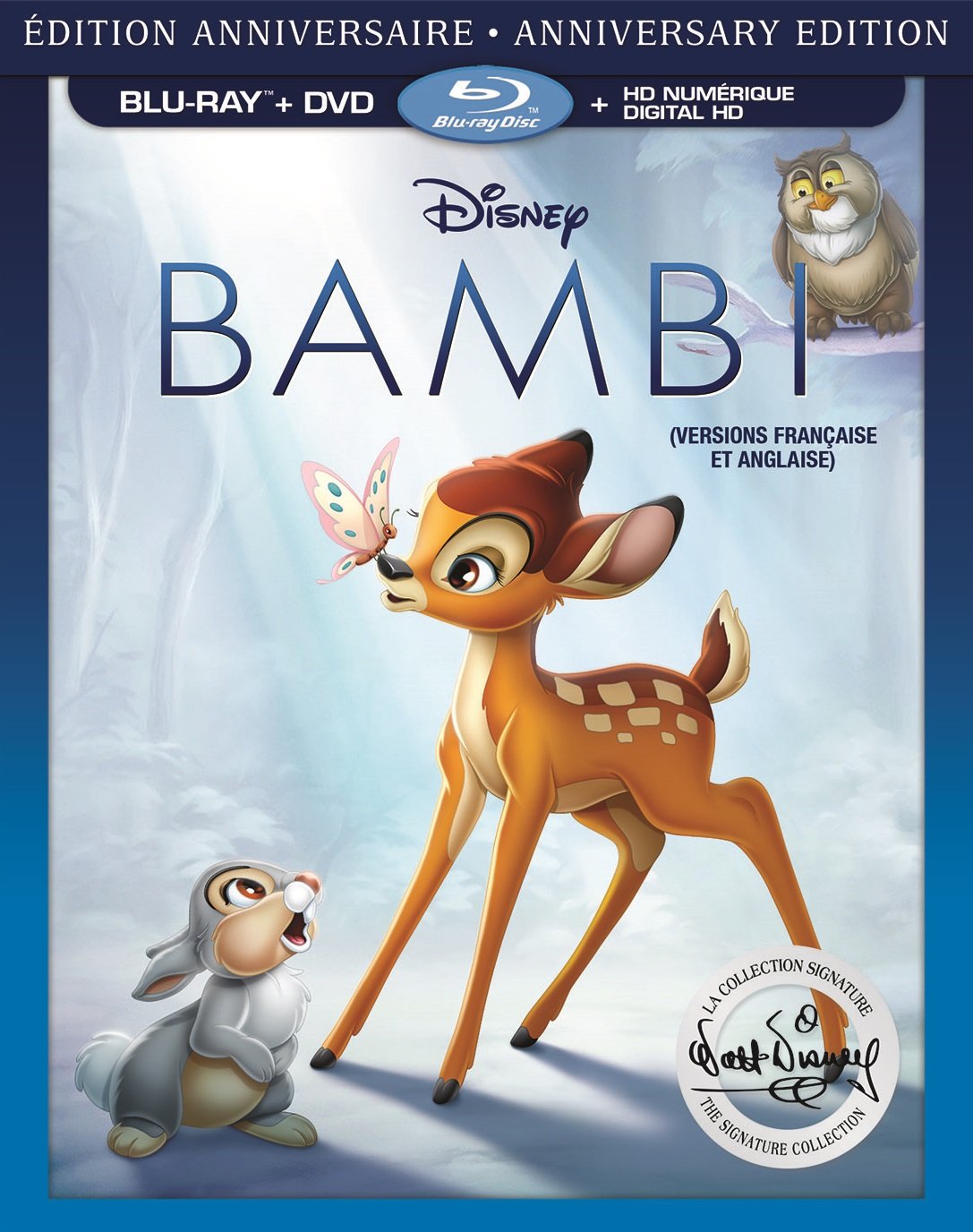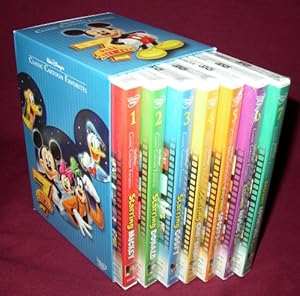The release of Disney’s “Bambi” in 1942 marked a significant milestone in the realm of animated cinema. This timeless classic not only captivated audiences with its heartwarming story but also left an indelible mark on animation techniques and visual storytelling. This article delves into the artistic elements and innovative animation techniques employed in “Bambi,” exploring how it solidified Walt Disney’s legacy in the world of visual arts.
The Artistic Foundations of Bambi
At its core, “Bambi” is a story about love, loss, and the cycle of life. The film is based on Felix Salten’s 1923 novel “Bambi, A Life in the Woods,” which provided a rich backdrop for animators to create a visually stunning narrative. The artistic style of “Bambi” is characterized by a blend of realism and stylization, a hallmark of Disney’s animation during the early 20th century.
Visual Aesthetics and Color Palette

The visual aesthetics of “Bambi” are renowned for their breathtaking beauty. The film employs a rich color palette that captures the essence of nature in various seasons. The use of soft pastels reflects the innocence of childhood, while the darker tones in scenes depicting danger convey a sense of foreboding. Key elements of the color palette include:
- Spring Colors: Lush greens and vibrant floral hues that illustrate the beauty of nature.
- Autumnal Tones: Warm oranges and browns that symbolize the transition in the story and the passage of time.
- Winter Shades: Cold blues and whites that evoke a sense of stillness and introspection.
This thoughtful application of color enhances the emotional tone of the film, allowing viewers to connect with the characters on a deeper level.
Background Art and Layout
The backgrounds in “Bambi” are a testament to the skill of Disney’s artists. The use of watercolor techniques and the incorporation of real-life landscapes helped create a rich tapestry for the characters to inhabit. Notable aspects include:
- Layering Techniques: Artists used multiple layers of transparent paint to create depth in the backgrounds.
- Realistic Textures: The portrayal of trees, grass, and water reflects an acute attention to detail, evoking the beauty of forest life.
- Innovative Perspectives: Scenes were often framed to emphasize the scale of the forest, making Bambi and his friends appear small in comparison to their majestic surroundings.
The backgrounds not only serve as a visual feast but also deepen the narrative by reflecting the characters’ emotional states and the themes of the film.
Animation Techniques that Revolutionized the Industry
“Bambi” is often hailed as a groundbreaking film due to its innovative animation techniques. The film pushed the boundaries of traditional animation, introducing new methods that would influence future productions.
Realism in Animal Animation

One of the most significant achievements of “Bambi” was its realistic portrayal of animal movements. The animators studied real animals extensively, capturing their behaviors and mannerisms to create authentic portrayals. Key techniques included:
- Live Animal Studies: Animators observed deer and other woodland creatures to understand their movements and interactions.
- Animation Reference Films: Footage of live animals was used to guide the animators in creating more lifelike animations.
- Character Design: The designs of Bambi, Thumper, and Flower were influenced by real animal anatomy, ensuring that their movements felt both believable and relatable.
This attention to detail not only enhanced the film’s authenticity but also set a new standard for character animation in the industry.
Innovative Use of Depth and Perspective

Another groundbreaking aspect of “Bambi” was the film’s use of depth and perspective. The introduction of the “multi-plane camera” allowed for dynamic scenes that felt more immersive. Key innovations included:
- Layered Backgrounds: By having multiple layers of painted backgrounds, animators could create a sense of depth, making scenes feel three-dimensional.
- Dynamic Camera Movements: The multi-plane camera enabled smooth panning and zooming effects, enhancing the visual storytelling.
- Foreground Objects: Incorporating foreground elements added to the realism and depth of scenes, drawing viewers into the world of Bambi.
These techniques not only enriched the film’s storytelling but also influenced countless animated films that followed.
Thematic Depth: Life, Death, and Nature
The themes of “Bambi” resonate with audiences of all ages, addressing the complexities of life, death, and the beauty of nature. The film doesn’t shy away from portraying the harsh realities of life in the wild, which contributes to its emotional depth. Key thematic elements include:
- The Circle of Life: The film emphasizes the cycle of life through Bambi’s journey from innocence to maturity.
- Human Impact on Nature: The presence of hunters serves as a stark reminder of the dangers posed by humans to wildlife.
- Friendship and Family: The bond between Bambi, his mother, and his friends highlights the importance of companionship and support.
This thematic richness adds layers of meaning, prompting viewers to reflect on their relationship with nature and the world around them.
The Lasting Influence of Bambi on Animation and Culture
![Bambi (TwoDisc Platinum Edition) [DVD] Hardie Albright](https://m.media-amazon.com/images/I/514YVH923XL.jpg)
The impact of “Bambi” extends far beyond its initial release. The film has influenced generations of animators, storytellers, and filmmakers. Its legacy can be seen in various aspects of modern animation and popular culture.
Influence on Future Disney Films
“Bambi” set a precedent for emotional storytelling and character development in animated films. Its influence can be traced in numerous subsequent Disney productions, including:
- The Lion King: Similar themes of life, loss, and the circle of life echo throughout the film.
- Finding Nemo: The exploration of familial bonds and the journey of growth resonate with Bambi’s narrative.
- Frozen: The depth of character relationships and emotional storytelling can be linked back to Bambi’s legacy.
Cultural Impact and Legacy

Culturally, “Bambi” has become a significant reference point in discussions about animation and storytelling. It has inspired:
- Merchandising: Bambi’s image has been used in various products, from toys to clothing, making it a recognizable character worldwide.
- Environmentalism: The film has influenced environmental movements, encouraging awareness of wildlife conservation and the importance of protecting nature.
- Parodies and Homages: Bambi’s iconic scenes have been referenced and parodied in numerous films, TV shows, and other media, solidifying its place in popular culture.
Conclusion: A Timeless Legacy

Walt Disney’s “Bambi” is more than just a beloved animated film; it is a masterpiece that showcases the artistry and innovation of its time. Through its stunning visuals, groundbreaking animation techniques, and profound themes, “Bambi” has left an enduring legacy in the world of animation and storytelling. The film’s influence continues to resonate, shaping the way stories are told in animation and reminding us of the beauty and fragility of life. As we explore the art and animation of “Bambi,” we celebrate not only its historical significance but also its ongoing impact on culture and the arts.